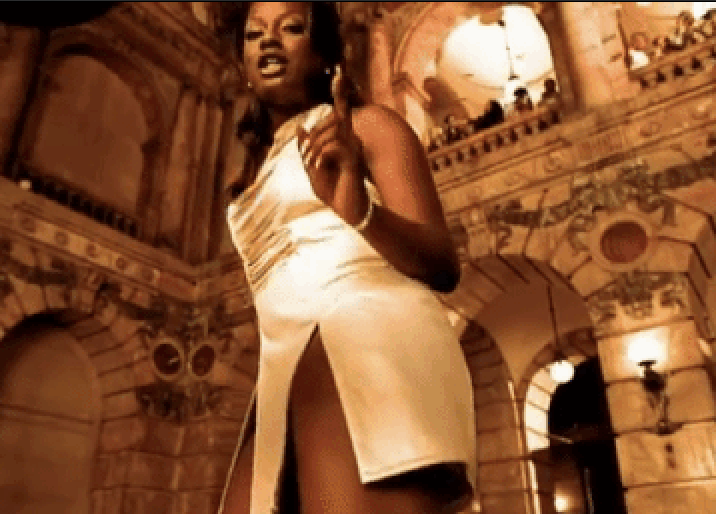by Sade Hawthorne
Imagine a world where you had the choice to watch a marathon of compelling historical narrations of what was once the biggest musical acts in the world. In the late 90’s/early 2000s, you could find entertaining yet critical shows that displayed extensive musical archives. Take, for instance, VH1's hit show, Behind the Music. Airing from 1997 to 2014, the TV series allowed fans to take a deep dive into the careers of our favorite artists, across all genres. Many of the stories featured on the show were spoken of for the first time. Case in point, the Mad Hatter of Rap, Busta Rhymes. During his episode he disclosed his personal truths, like battling his way to mainstream recognition while dealing with the tragic loss of his son, among other setbacks. How else would we find intimate details about the likes of Busta Rhymes and TLC from their own point of view back then? When we think about Hip-Hop’s golden era, we usually pinpoint the mid-1980s into the 1990s. Hip-Hop docuseries are critical storytelling not only for the continued progression of the genre, but also for the community, especially as we look to an unpredictable future.
Looking into a well-known episode, VH1 aired a telling of the iconic trio from those that knew them best for the world to see. On April 18, 1998, insights shared from Lisa 'Left Eye' Lopes, Rozonda 'Chilli' Thomas and, Tionne 'T-Boz' Watkins allowed those to connect with the artists on a deeper level in just 60 minutes. Not to mention the unforgettable moment where Left Eye opens up about the group's financial woes, "how can a group sell 10 million records and be broke?"
Alongside Behind the Music came The Greatest, another juggernaut curated by VH1 where each episode featured a countdown of songs, albums, moments, or musicians. A mini-documentary in its own right, each countdown was coupled with commentary from entertainment industry figures telling a quick story or a fascinating fact. A prime example would be the 40 Greatest Hip-Hop Songs of the 90s episode, which premiered in December 2012. This episode introduced a fair amount of new music to their audience from the likes of Big Pun and Arrested Development, especially for those that did not have the privilege to enjoy the music at its peak. Personally hearing "Who you trying to get crazy with ése/Don't you know I'm loco?" for the first time on this program was the reason why I went online and downloaded dozens of songs (with potential viruses attached). Outside of familial influences, shows like these were the catalyst for further research in Hip-Hop going as far back as the 1970s.
Fast forward almost a decade, and these documentaries and television series have diminished. Thus, imagine my excitement when I saw BET's promotional ad for a new docuseries highlighting No Limit Records. As someone who grew up in the South and watched BET religiously, hearing "Make 'Em Say Ugh" and "Ruff Ryders' Anthem" brings back a sense of home. From the moment I heard the news, I was hooked. Listening to Percy Miller, aka Master P, talk about his journey during the 5-part docuseries was nothing short of inspirational. Being a fan of Hip-Hop is one thing, but being able to receive valuable life lessons from these impressive feats only makes the music sound that much better.
Talking to Billboard, Master P expressed that he "wants to continue to inspire and educate my fans and introduce my journey to a new generation," and he did exactly that. The opportunity to get a more in-depth look from artists such as Silkk The Shocker, Mia X, and Mystikal provided a holistic approach to the 90s dynasty that was No Limit. We always see the glitz and the glam that comes from hard work and dedication, but through these docuseries we’re reminded that artists are regular people like you and I. Whether young or old, there’s a message for anyone wanting to listen.
Immediately after came the stirring Ruff Ryder chronicles. Unless you live under a rock, you know of DMX. Still, through the installment, we're able to view how the music empire and all of its encompassing artists came to be. With interviews featuring label founders Joaquin "Waah" Dean, Darin "Dee" Dean, and Chivon Dean, the series peeled back the layers back with each defining episode enabling viewers to glimpse what it truly looks like to deal with the ugly side of entertainment. The first lady of Ruff Ryders, Eve, spoke on how she had to grapple with dealing with fame and the burgeoning pressure that eventually led to her leaving the tour early to get her mind right. Then there was DMX, the one to never shy away from difficult conversations, disclosing his continuing fight with mental illness. Regardless of their struggles, Ruff Ryders went on to create unforgettable history.
The recurring theme of both of these docuseries was family, and when you really think about it, Hip-Hop at its nucleus is a community that has influenced the lives of many just as a family would. Hip-Hop has as many as six elements according to scholars, the fifth being “knowledge”. So eloquently put, the Kennedy Center elaborated on the fifth element further:
“Hip-Hop’s fifth element of “knowledge” teaches the Hip-Hop community about its identity and ways to express that identity. It places great importance on claiming a stake in one’s own education. “Knowing where YOU come from helps to show YOU where YOU are going,” writes legendary MC KRS-One. “Once you know where you come from you then know what to learn.”
To the artist breaking through the industry or the inquiring kid who wants to learn more about Hip-Hop, these docuseries are needed more than ever. A discussion can and have been made between the quantity and quality of Hip-Hop as of late. There’s a place for it all, but there seems to be a disconnect between what was and what is. To truly advance, how can we continue to break barriers without a sense of direction? If we allow the past to be forgotten, then we are in serious trouble. However, there seems to be brighter days on the horizon. Looking at recent events, we can still see the influence of Hip-Hop's Golden Era making a comeback in all facets in today's music (see 21 Savage's Savage Mode II album cover.) Here's to honoring Hip-Hop history and the progression of the genre one documentary at a time.











